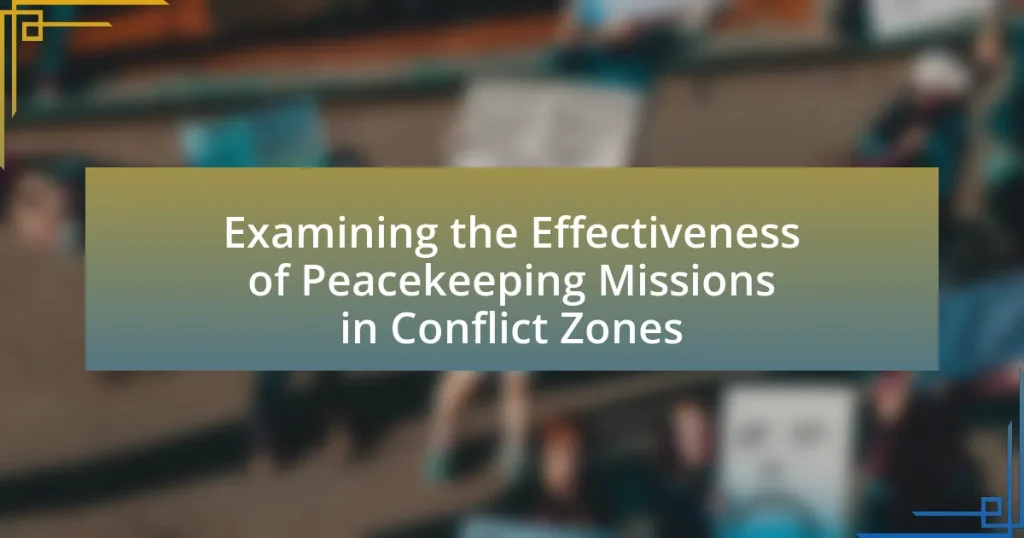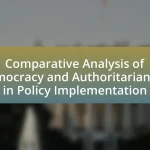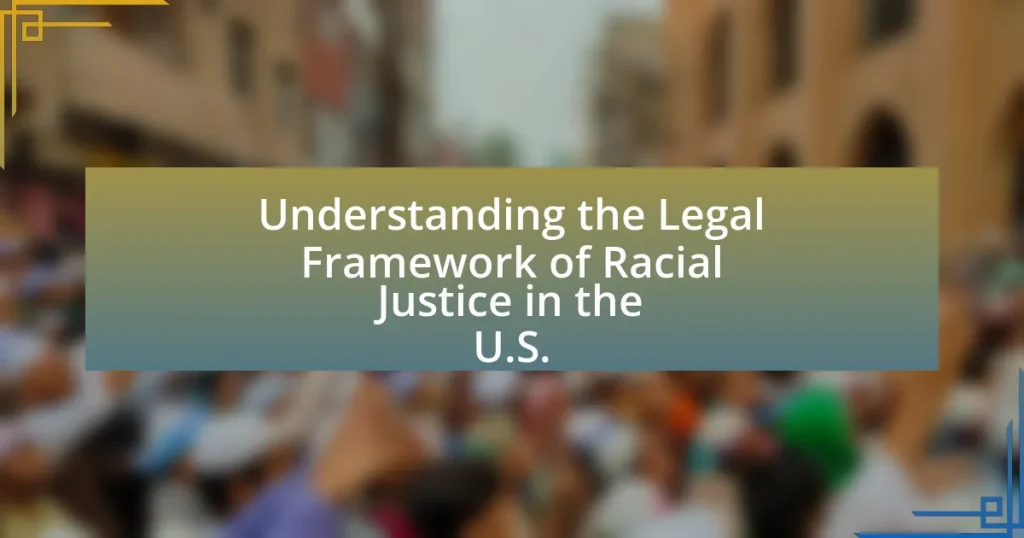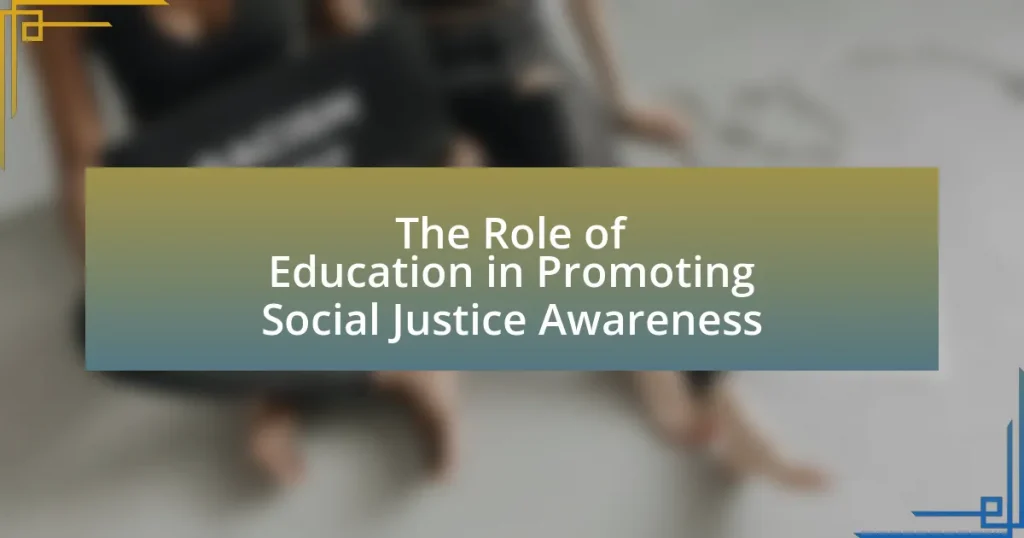Peacekeeping missions in conflict zones are operations primarily conducted by the United Nations to maintain or restore peace and security in areas affected by armed conflict. These missions involve the deployment of military personnel, police, and civilian experts to monitor ceasefires, protect civilians, and support peace agreements. The article examines the operational dynamics, objectives, and effectiveness of these missions, highlighting their roles in conflict resolution, addressing humanitarian crises, and the challenges they face, such as resource limitations and security threats. Additionally, it discusses the impact of local governments and external influences on mission success, as well as best practices that can enhance their effectiveness.
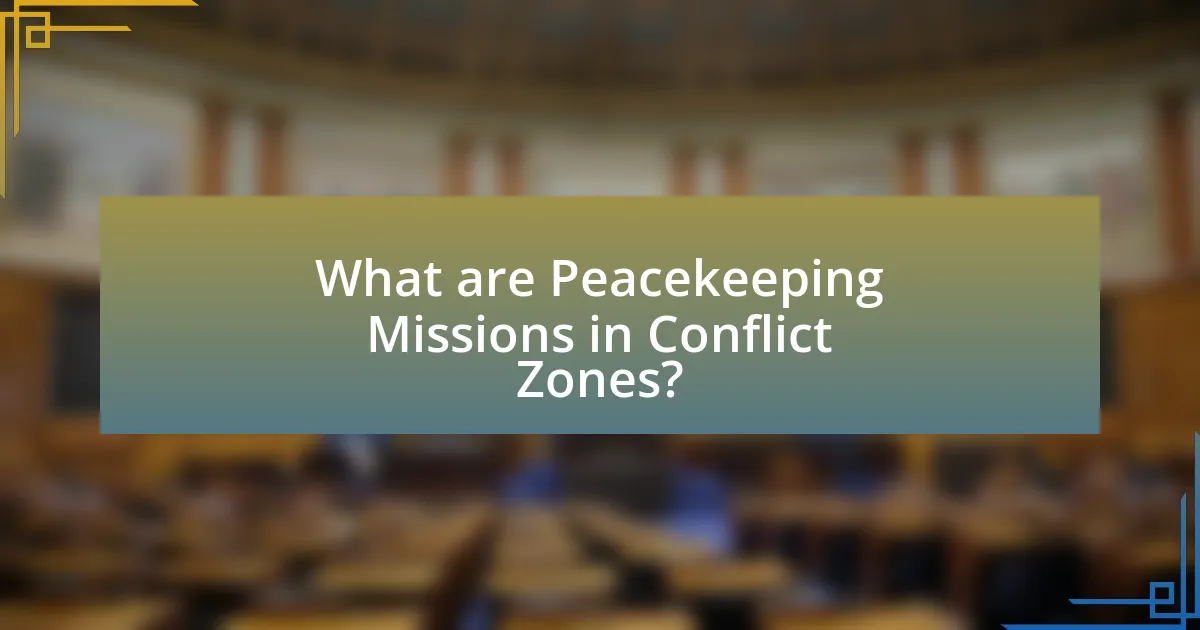
What are Peacekeeping Missions in Conflict Zones?
Peacekeeping missions in conflict zones are operations conducted by international organizations, primarily the United Nations, to maintain or restore peace and security in areas affected by armed conflict. These missions typically involve the deployment of military personnel, police, and civilian experts to monitor ceasefires, protect civilians, and support the implementation of peace agreements. For instance, the United Nations Stabilization Mission in Haiti (MINUSTAH) was established in 2004 to help stabilize the country following political turmoil and violence, demonstrating the role of peacekeeping in addressing immediate security concerns and fostering long-term stability.
How do Peacekeeping Missions operate in various conflict zones?
Peacekeeping missions operate in various conflict zones by deploying multinational forces to maintain peace and security, facilitate political processes, and protect civilians. These missions typically involve a combination of military personnel, police, and civilian experts who work together under a mandate from the United Nations or regional organizations. For instance, the United Nations Stabilization Mission in Haiti (MINUSTAH) was established to restore order following political turmoil and has included over 10,000 troops at its peak, demonstrating the scale and commitment of such operations. Peacekeeping missions also engage in disarmament, demobilization, and reintegration of former combatants, as seen in the United Nations Mission in Liberia (UNMIL), which helped to stabilize the country after a prolonged civil war. The effectiveness of these missions is often assessed through their ability to reduce violence, support the establishment of governance structures, and promote human rights, with various studies indicating that peacekeeping can significantly lower the risk of renewed conflict in post-war societies.
What are the key objectives of Peacekeeping Missions?
The key objectives of Peacekeeping Missions are to maintain peace and security, protect civilians, and support the implementation of peace agreements. These missions aim to prevent the resurgence of conflict by providing a stable environment, facilitating humanitarian assistance, and promoting political dialogue among conflicting parties. For instance, the United Nations Peacekeeping Operations have been deployed in various regions, such as the Democratic Republic of the Congo, where they have successfully reduced violence and helped in the disarmament of armed groups, demonstrating their effectiveness in achieving these objectives.
What roles do peacekeepers play in conflict resolution?
Peacekeepers play crucial roles in conflict resolution by facilitating dialogue, monitoring ceasefires, and protecting civilians. They act as neutral parties to help conflicting sides engage in negotiations, thereby reducing tensions and fostering communication. For instance, the United Nations peacekeeping missions have been deployed in various regions, such as in the Democratic Republic of the Congo, where they have successfully mediated discussions between warring factions. Additionally, peacekeepers monitor and verify compliance with peace agreements, which helps to maintain stability and prevent the resurgence of violence. Their presence often deters potential aggressors, contributing to a safer environment for humanitarian efforts and rebuilding processes.
Why are Peacekeeping Missions necessary in conflict zones?
Peacekeeping missions are necessary in conflict zones to maintain stability and protect civilians. These missions help prevent the escalation of violence by providing a neutral presence that can mediate between conflicting parties. For instance, the United Nations peacekeeping operations have been deployed in various regions, such as in the Democratic Republic of the Congo, where they have contributed to reducing violence and facilitating humanitarian assistance. According to a 2018 report by the United Nations, peacekeeping missions have been effective in reducing the likelihood of a return to conflict by approximately 50% in post-conflict countries. This demonstrates that peacekeeping missions play a crucial role in fostering peace and security in areas affected by conflict.
What factors contribute to the need for international intervention?
The need for international intervention is primarily driven by factors such as humanitarian crises, threats to regional stability, and violations of human rights. Humanitarian crises, including famine, disease outbreaks, and mass displacement, often necessitate external assistance to alleviate suffering and restore order. For instance, the Syrian civil war has led to millions of refugees and significant humanitarian needs, prompting international responses. Threats to regional stability arise when conflicts spill over borders, as seen in the case of the Rwandan Genocide, which had implications for neighboring countries. Violations of human rights, such as ethnic cleansing or genocide, compel the international community to act, as evidenced by interventions in Kosovo and Libya to protect vulnerable populations. These factors collectively underscore the urgency for international intervention in conflict zones.
How do Peacekeeping Missions address humanitarian crises?
Peacekeeping missions address humanitarian crises by providing security, facilitating the delivery of aid, and supporting the restoration of essential services. These missions often deploy personnel to conflict zones to create a safe environment for humanitarian organizations to operate, which is crucial for delivering food, medical assistance, and shelter to affected populations. For instance, the United Nations Multidimensional Integrated Stabilization Mission in Mali (MINUSMA) has been instrumental in protecting civilians and enabling humanitarian access in a region plagued by violence and instability. Additionally, peacekeeping forces often collaborate with local and international NGOs to ensure that aid reaches those in need, thereby directly mitigating the impact of humanitarian crises.
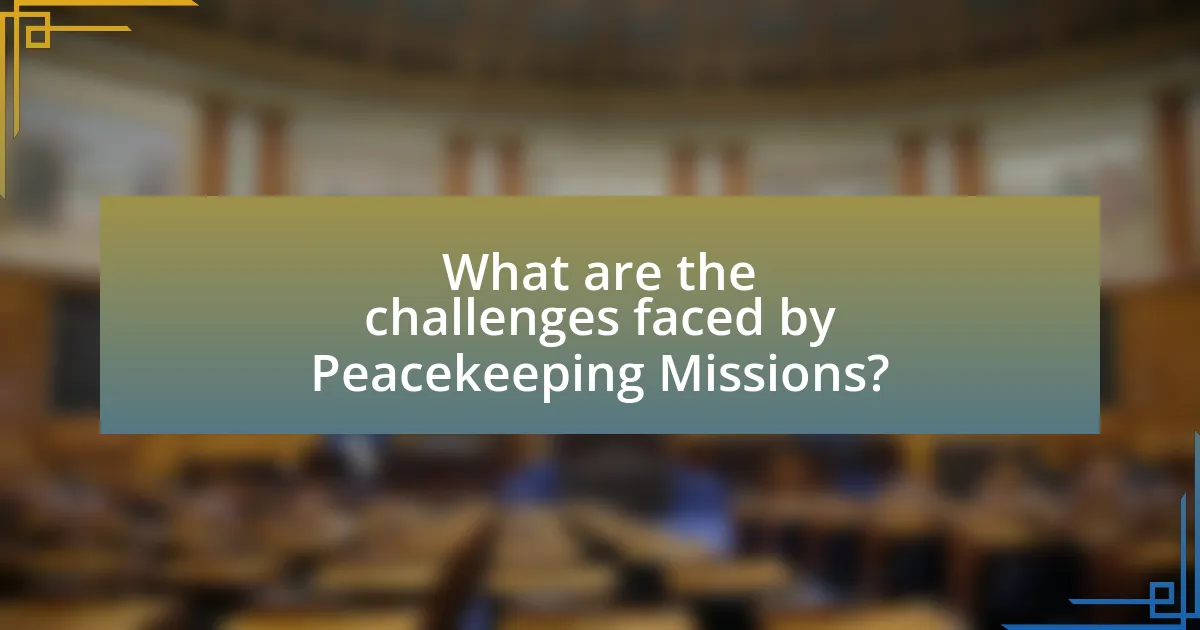
What are the challenges faced by Peacekeeping Missions?
Peacekeeping missions face several significant challenges that hinder their effectiveness. These challenges include inadequate resources, complex political environments, and the risk of violence against peacekeepers. For instance, the United Nations peacekeeping operations often operate with limited funding and personnel, which restricts their ability to fulfill mandates effectively. Additionally, peacekeepers frequently navigate intricate political landscapes where local factions may oppose their presence, complicating efforts to maintain stability. Furthermore, the safety of peacekeepers is a critical concern, as evidenced by incidents such as the ambush of UN peacekeepers in Mali, which highlights the dangers they encounter in conflict zones. These factors collectively undermine the success of peacekeeping missions in achieving lasting peace and security.
How do political dynamics affect the effectiveness of Peacekeeping Missions?
Political dynamics significantly influence the effectiveness of peacekeeping missions by shaping the operational environment and the willingness of conflicting parties to cooperate. For instance, when host nations exhibit political instability or lack legitimacy, peacekeepers often face challenges in gaining local support, which can hinder their ability to maintain peace. A study by the United Nations Department of Peacekeeping Operations indicates that missions deployed in politically fragmented environments are less likely to achieve their objectives, with only 30% of such missions succeeding in establishing lasting peace compared to 70% in more politically stable contexts. Additionally, the interests of powerful nations involved in the conflict can lead to competing agendas that undermine the neutrality of peacekeeping forces, further complicating their effectiveness.
What impact do local governments have on mission success?
Local governments significantly influence mission success in peacekeeping operations by shaping the political, social, and economic environment. Their support can facilitate cooperation between peacekeeping forces and local communities, enhancing trust and communication. For instance, when local governments actively engage with peacekeeping missions, they can provide critical information about local dynamics, which helps in tailoring strategies to the specific context. Research indicates that missions with strong local government collaboration report higher success rates, as seen in the United Nations Multidimensional Integrated Stabilization Mission in Mali (MINUSMA), where local governance structures were pivotal in stabilizing regions. Thus, the effectiveness of peacekeeping missions is closely tied to the level of engagement and support from local governments.
How do external influences shape the outcomes of Peacekeeping Missions?
External influences significantly shape the outcomes of peacekeeping missions by affecting their operational effectiveness, legitimacy, and sustainability. For instance, the involvement of regional powers can either bolster or undermine peacekeeping efforts; when neighboring countries support a mission, it often leads to enhanced cooperation and resource allocation, as seen in the African Union’s support for peacekeeping in Somalia. Conversely, external political agendas can complicate missions, as evidenced by the United Nations peacekeeping efforts in the Democratic Republic of the Congo, where geopolitical interests have led to inconsistent support and operational challenges. Additionally, funding from external donors can determine the scope and capabilities of peacekeeping forces, impacting their ability to fulfill mandates effectively. Thus, external influences play a crucial role in determining whether peacekeeping missions achieve their objectives or face significant obstacles.
What logistical challenges do Peacekeeping Missions encounter?
Peacekeeping missions encounter significant logistical challenges, including transportation difficulties, supply chain disruptions, and inadequate infrastructure. These challenges arise due to the often unstable environments in which peacekeeping forces operate, making it hard to transport personnel and equipment safely. For instance, the United Nations peacekeeping operations in the Democratic Republic of the Congo have faced issues with road conditions and security threats that hinder movement. Additionally, the lack of local resources can complicate the procurement of necessary supplies, leading to delays in mission effectiveness. Historical data shows that logistical failures have directly impacted the operational capabilities of peacekeeping missions, highlighting the critical need for robust logistical planning and support.
How do resource limitations affect mission operations?
Resource limitations significantly hinder mission operations by restricting the availability of essential personnel, equipment, and funding necessary for effective execution. For instance, a lack of adequate funding can lead to insufficient training for peacekeeping forces, resulting in decreased operational readiness and effectiveness. According to a report by the United Nations, missions that faced budget cuts often struggled to maintain security and stability in conflict zones, leading to increased risks for both peacekeepers and local populations. Additionally, limited resources can impede logistical support, making it challenging to deliver humanitarian aid or conduct necessary patrols, ultimately undermining the mission’s objectives and effectiveness in achieving peace and security.
What are the implications of security threats on peacekeeping efforts?
Security threats significantly undermine peacekeeping efforts by increasing operational risks and limiting the effectiveness of missions. For instance, when peacekeepers face armed resistance or threats from non-state actors, their ability to protect civilians and maintain order diminishes, leading to a potential escalation of violence. Historical examples, such as the challenges faced by the United Nations in Somalia during the early 1990s, illustrate how security threats can result in mission failures and increased casualties among peacekeepers and civilians alike. Additionally, security threats can lead to reduced troop contributions from member states, as nations may be reluctant to deploy forces in high-risk environments, further weakening the overall capacity of peacekeeping operations.
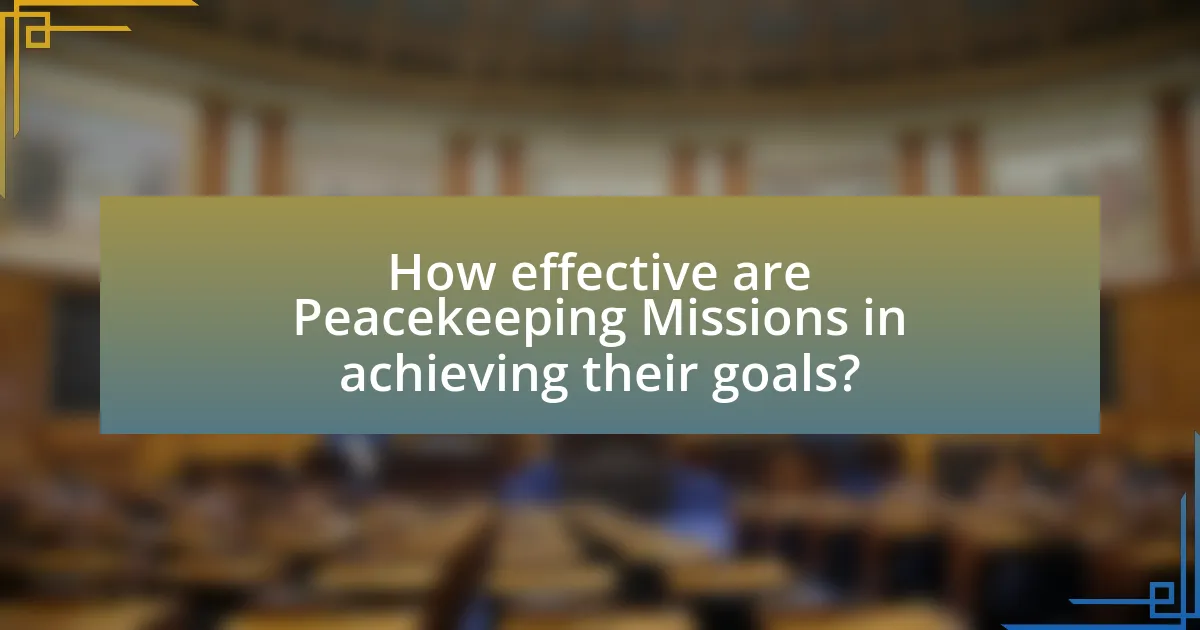
How effective are Peacekeeping Missions in achieving their goals?
Peacekeeping missions are moderately effective in achieving their goals, with success rates varying based on context and implementation. According to a study by the United Nations, peacekeeping operations have been successful in reducing violence in conflict zones by approximately 50% when deployed effectively. However, the effectiveness is contingent upon factors such as the mandate clarity, troop quality, and local cooperation. For instance, the United Nations Multidimensional Integrated Stabilization Mission in Mali (MINUSMA) has faced challenges due to a complex security environment, highlighting that effectiveness can be hindered by local dynamics and insufficient resources.
What metrics are used to evaluate the success of Peacekeeping Missions?
Metrics used to evaluate the success of peacekeeping missions include the reduction of violence, the establishment of political stability, and the improvement of humanitarian conditions. The reduction of violence is often measured by tracking incidents of conflict and casualties before and after the deployment of peacekeeping forces. Political stability can be assessed through the successful implementation of peace agreements and the establishment of functioning governance structures. Humanitarian conditions are evaluated by monitoring access to essential services, such as healthcare and education, as well as the overall well-being of the affected population. These metrics provide a comprehensive framework for assessing the effectiveness of peacekeeping missions in achieving their objectives.
How do we measure the impact on violence reduction?
To measure the impact on violence reduction, researchers typically analyze crime statistics, survey data, and conflict-related indicators before and after the implementation of peacekeeping missions. For instance, a study by the United Nations Department of Peacekeeping Operations found that areas with peacekeeping forces experienced a 30% reduction in violent incidents compared to similar regions without such interventions. This quantitative analysis, combined with qualitative assessments from local communities regarding their perceptions of safety, provides a comprehensive understanding of the effectiveness of violence reduction efforts.
What indicators reflect improvements in local governance?
Indicators that reflect improvements in local governance include increased citizen participation in decision-making processes, enhanced transparency in government operations, and improved service delivery efficiency. For instance, a study by the United Nations Development Programme found that communities with higher levels of citizen engagement in local governance reported better satisfaction with public services and greater trust in government institutions. Additionally, metrics such as the reduction in corruption levels, as measured by indices like Transparency International’s Corruption Perceptions Index, further validate improvements in governance. These indicators collectively demonstrate a shift towards more accountable and responsive local governance structures.
What are some case studies of successful and unsuccessful Peacekeeping Missions?
Successful peacekeeping missions include the United Nations Transitional Authority in Cambodia (UNTAC), which helped restore peace and facilitate democratic elections in the early 1990s, leading to a significant reduction in violence and the establishment of a functioning government. In contrast, the United Nations Operation in Somalia II (UNOSOM II) is an example of an unsuccessful mission, as it faced severe challenges, including lack of cooperation from local factions and ultimately led to the infamous Battle of Mogadishu in 1993, resulting in significant casualties and a withdrawal of UN forces. These case studies illustrate the varying outcomes of peacekeeping efforts based on local conditions and international support.
What lessons can be learned from successful missions?
Successful missions in peacekeeping contexts demonstrate the importance of clear objectives, effective communication, and local engagement. Clear objectives ensure that all stakeholders understand the mission’s goals, which enhances coordination and focus. Effective communication fosters trust and collaboration among peacekeepers, local populations, and other entities involved. Engaging local communities is crucial, as it builds legitimacy and support for the mission, leading to more sustainable outcomes. For instance, the United Nations Stabilization Mission in Haiti (MINUSTAH) successfully reduced violence and improved security through community engagement and collaboration with local authorities, highlighting these lessons in practice.
What factors contributed to the failure of certain missions?
Factors that contributed to the failure of certain peacekeeping missions include inadequate resources, lack of clear mandates, and insufficient political support. In many instances, peacekeeping forces were deployed without the necessary personnel, equipment, or funding, which hindered their operational effectiveness. For example, the United Nations peacekeeping mission in Rwanda in 1994 faced severe limitations in troop numbers and logistical support, which contributed to its inability to prevent the genocide. Additionally, ambiguous or overly restrictive mandates often left peacekeepers unable to respond effectively to escalating violence, as seen in the case of the UN mission in Bosnia during the early 1990s. Lastly, the absence of strong backing from member states, both politically and militarily, undermined the missions’ credibility and effectiveness, as demonstrated by the lack of intervention during the Srebrenica massacre.
What best practices can enhance the effectiveness of Peacekeeping Missions?
Best practices that can enhance the effectiveness of peacekeeping missions include robust training, clear mandates, and strong local partnerships. Robust training ensures that peacekeepers are well-prepared for the complexities of conflict zones, as evidenced by the United Nations’ emphasis on pre-deployment training programs that have improved mission outcomes. Clear mandates provide peacekeepers with specific objectives, which have been shown to increase mission success rates; for instance, missions with defined goals, such as the United Nations Stabilization Mission in Haiti, have demonstrated improved stability. Strong local partnerships foster trust and cooperation with communities, which is critical for the success of peacekeeping efforts, as highlighted by the positive impact of community engagement strategies in missions like the African Union Mission in Somalia.
How can training and preparation improve mission outcomes?
Training and preparation significantly enhance mission outcomes by equipping personnel with the necessary skills and knowledge to effectively respond to complex situations. Well-structured training programs, such as those implemented by the United Nations for peacekeeping forces, focus on conflict resolution, cultural sensitivity, and tactical operations, which directly contribute to improved decision-making in the field. For instance, a study by the International Peace Institute found that missions with comprehensive pre-deployment training had a 30% higher success rate in achieving their objectives compared to those with minimal training. This evidence underscores the critical role that thorough preparation plays in ensuring that peacekeeping missions can adapt to dynamic environments and effectively fulfill their mandates.
What role does community engagement play in mission success?
Community engagement is crucial for the success of peacekeeping missions in conflict zones. Engaging local communities fosters trust, enhances cooperation, and ensures that the mission aligns with the needs and perspectives of the affected population. Research indicates that missions with strong community involvement are more likely to achieve their objectives, as they can better address local grievances and promote sustainable peace. For instance, a study by the United Nations Department of Peacekeeping Operations found that missions that actively engaged with communities saw a 30% increase in local support and cooperation, leading to more effective conflict resolution and stabilization efforts.










